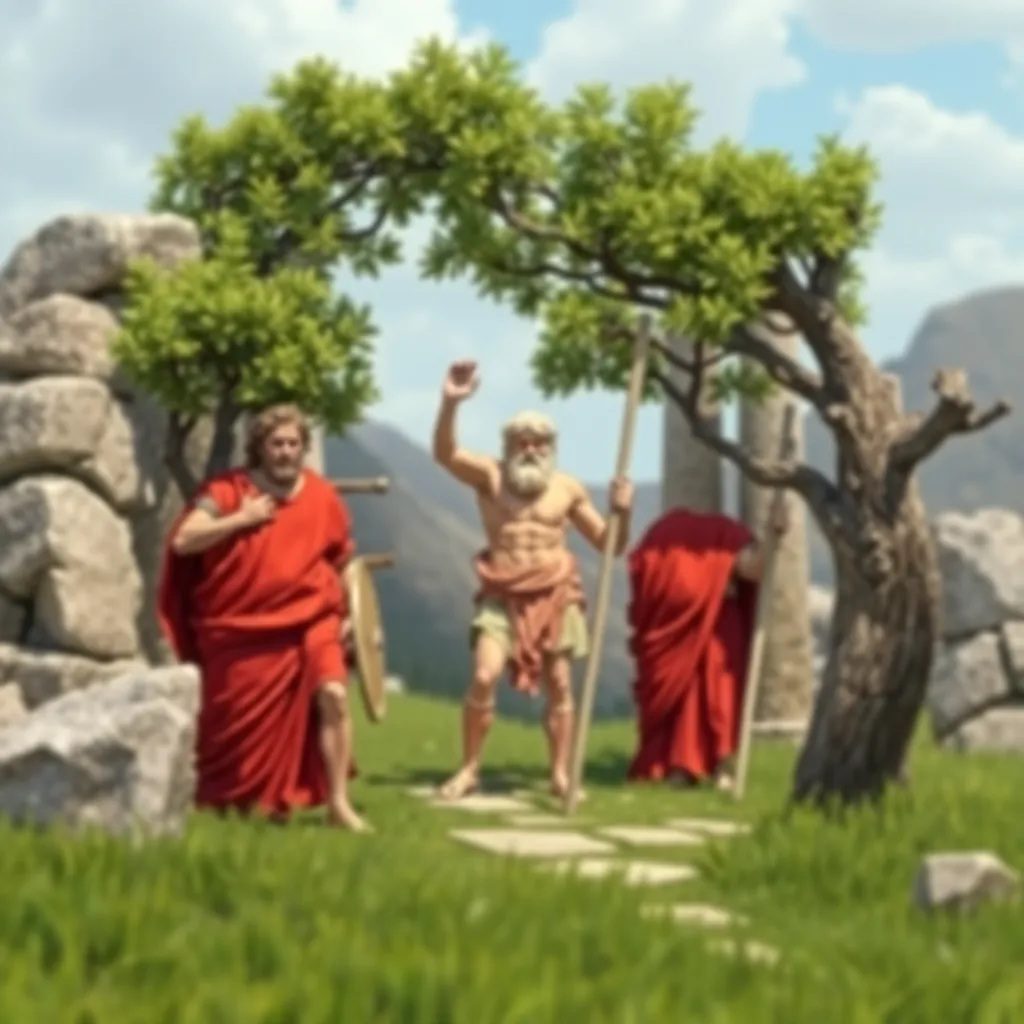The Role of Nature in Heracles’ Labors: Symbolism and Significance
I. Introduction
Heracles, one of the most renowned heroes of Greek mythology, is celebrated for his extraordinary strength and heroic deeds, particularly the Twelve Labors he undertook as penance. Each labor challenges Heracles in unique ways, and together they form a narrative rich with themes of struggle, redemption, and transformation. In this mythological tapestry, nature plays a crucial role, serving not just as a backdrop but as an integral component that embodies various symbols and themes. This article explores how nature is woven into the fabric of Heracles’ Labors, illustrating its significance as a representation of struggle, growth, and transformation.
II. The Significance of Nature in Greek Mythology
In ancient Greek beliefs, nature was not merely a passive setting but a living entity, imbued with spirit and significance. The ancient Greeks viewed the natural world as interconnected with the divine, where gods, heroes, and the environment influenced one another. Nature represented challenges, often acting as a testing ground for human heroes. The interplay between the divine and the natural world highlights the significance of nature in Greek mythology, positioning it as a symbol of trials that one must face to achieve greatness.
III. The Nemean Lion: The Indomitable Wilderness
The first of Heracles’ Labors was to slay the Nemean Lion, a monstrous creature that terrorized the region of Nemea. This lion, with its impenetrable skin, resided in a dense forest, symbolizing the raw ferocity of the wild. The lion’s habitat is a reflection of nature’s untamed spirit, presenting a formidable challenge to Heracles.
- Symbolism of the Nemean Lion: The lion represents nature’s ferocity and the primal forces that heroes must confront.
- Heracles’ Victory: By defeating the Nemean Lion, Heracles triumphs over the indomitable wilderness, showcasing his strength and resilience.
IV. The Lernaean Hydra: The Complexity of Nature
The second labor, the slaying of the Lernaean Hydra, introduces a different aspect of nature’s complexity. The Hydra was a serpent-like creature with multiple heads that regrew when severed, dwelling in the swampy waters of Lerna. This environment is emblematic of nature’s resilience and its multifaceted challenges.
- Symbolic Significance: The Hydra represents the intricate and often daunting aspects of nature, reflecting the idea that challenges can multiply and become more complex when faced.
- Heracles’ Struggle: Heracles’ battle with the Hydra serves as a metaphor for confronting multifaceted challenges, emphasizing the need for strategy and perseverance.
V. The Ceryneian Hind: The Chase and Harmony with Nature
The Ceryneian Hind, a sacred and elusive creature, presents a different relationship between Heracles and nature. The hunt for the Hind, known for its incredible speed and grace, symbolizes a pursuit that requires both skill and respect for the natural world.
- Elegance and Sacred Nature: The Ceryneian Hind is often seen as a symbol of purity and grace, embodying the beauty of the natural world.
- Themes of Pursuit: Heracles’ quest to capture the Hind reflects the balance between ambition and reverence, highlighting the importance of understanding and respecting nature.
VI. The Erymanthian Boar: Nature’s Untamed Spirit
The Erymanthian Boar, known for its immense size and strength, inhabits the rugged mountains of Erymanthos. This labor illustrates another facet of nature’s untamed spirit, where Heracles must confront not just the beast but also the formidable wilderness surrounding it.
- Symbol of Untamed Nature: The boar represents the challenges posed by wild and uncontrolled natural forces, symbolizing the fears and obstacles that reside within oneself.
- Heracles’ Capture: Capturing the boar becomes a metaphor for overcoming one’s inner fears and mastering the chaotic elements of nature.
VII. The Augean Stables: Human Impact on Nature
One of the more peculiar labors involved cleaning the Augean Stables, which housed an immense number of cattle and had not been cleaned for years. This task highlights the relationship between humanity and the environment, emphasizing the consequences of neglect.
- Symbolism of the Stables: The stables represent the neglect and pollution that can arise from human impact on nature, serving as a call for ecological responsibility.
- Ecological Responsibility: Heracles’ task teaches the importance of caring for the environment and addressing the consequences of human actions.
VIII. Conclusion
Throughout the Twelve Labors of Heracles, nature serves as a powerful symbol of various themes, including struggle, complexity, reverence, and ecological responsibility. Each labor not only tests Heracles’ strength and ingenuity but also reflects the broader implications of nature in the context of heroism and myth. The interactions between Heracles and the natural world reveal profound lessons about respect for nature, the necessity of facing challenges, and the importance of maintaining balance in our relationship with the environment. Thus, nature in Greek mythology is not merely a setting; it is a vital character that shapes the narrative of heroism and transformation.




